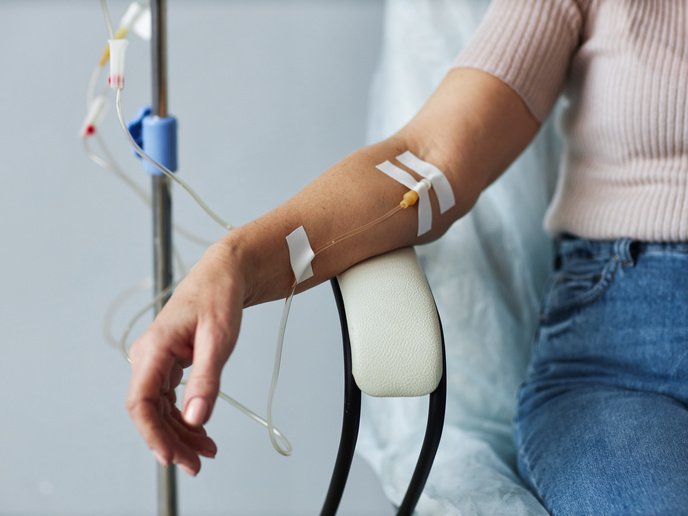Game-changing technologies for safe intravenous therapy
Intravenous (IV) therapy is the most frequently performed invasive medical procedure. Despite its essential role in healthcare, IV therapy is associated with significant risks for patients and medical professionals. Accidental catheter dislodgement and vascular air embolism (VAE) are serious IV therapy complications which can lead to severe health consequences and substantial healthcare expenses. For patients needing long-term care, managing chronic diseases, or receiving cancer treatments, home-based IV therapy is becoming a viable option. Increasing patient comfort and decreasing hospital visits, home-based IV therapy is advantageous, especially for older people. However, as IV therapy moves beyond clinical settings, it becomes even more critical to address safety concerns.
Avoiding catheter dislodgement
The EU-funded SAFE-Infusion project recognised these challenges and aimed to enhance the safety of IV therapy through the development of innovative solutions. With funding from the European Innovation Council, the project introduced ReLink® and AirVault®, technologies that prevent catheter dislodgement and eliminate harmful air bubbles in IV lines, respectively. ReLink® includes a safety connector, designed to separate when there is excessive force on the IV line. This contrasts with traditional methods which reinforce the connection between the patient and the catheter. Preventing catheter dislodgement eliminates the need for invasive and costly reinsertions. Furthermore, it enables quick reconnection, reducing material waste and treatment delays, and contributes to an overall safer experience for patients. “The ReLink® technology also incorporates self-sealing valves that prevent fluid leakage and protect patients and healthcare professionals from exposure to contaminated blood or hazardous drugs,” emphasises the CEO of Interlinked AB and project coordinator, Katarina Hedbeck.
Eliminating air bubbles in IV tubes
Air bubbles form naturally within IV tubes and pose a serious risk of air embolism that can block blood flow to essential organs such as the brain and lungs. Nurses typically manage this risk manually, which is time-consuming and prone to error. The AirVault® device automates this process by separating air from liquid without disrupting medication flow. By incorporating this closed system approach, the device reduces alarm fatigue from IV pump alerts, protects medical staff from hazardous drug exposure, and ensures uninterrupted drug delivery to patients.
Market readiness and future impact
Both ReLink® and AirVault® are approaching full-scale deployment. Hospitals across Europe can already place orders for ReLink®, with the first deliveries expected in the summer of 2025. Meanwhile, AirVault® is completing its final development phase and clinical trials, with plans to enter the global market by mid-2025 after FDA approval. “We anticipate a substantial impact of SAFE-Infusion products within the first five years following market launch. The expected benefits include fewer IV-related accidents and complications, reduced plastic waste, and projected revenues for the industry partners,” highlights Hedbeck. Moving forward, the partners will focus on expanding production to meet rising demand and form partnerships with distributors across Europe for widespread availability. Moreover, they plan to continue clinical research to validate the effectiveness of ReLink® and AirVault® in real-world healthcare settings. According to Gasgon Medical CEO, Vincent Forde: “Our next steps include piloting our device in leading global healthcare settings, scaling our team for technical and commercial success and taking advantage of our first-to-market position to deliver a new standard of care for IV therapy.”
Keywords
SAFE-Infusion, intravenous (IV) therapy, ReLink®, AirVault®, catheter dislodgement, vascular air embolism (VAE)



